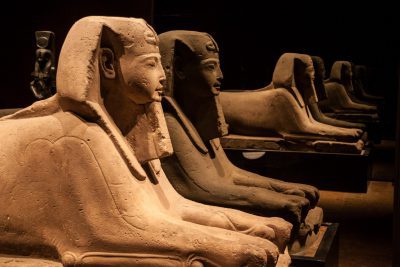 Maintenance management plays a crucial role in the preservation, operation, and overall success of museums. Beyond showcasing artistic and historical treasures, museums must ensure that their facilities remain safe, well-maintained, and conducive to delivering an exceptional visitor experience.
Maintenance management plays a crucial role in the preservation, operation, and overall success of museums. Beyond showcasing artistic and historical treasures, museums must ensure that their facilities remain safe, well-maintained, and conducive to delivering an exceptional visitor experience.
Preservation of Artifacts and Exhibits
Museums house invaluable artifacts and exhibits that require meticulous care to maintain their integrity for future generations. Effective maintenance management is pivotal, enabling regular inspections, routine cleaning, and timely repairs. These actions collectively stave off deterioration, extending the lifespan of these treasures. By harnessing advanced maintenance technologies, museums empower themselves with real-time monitoring capabilities, proactively identifying and mitigating potential risks. This comprehensive approach not only safeguards these priceless assets but also underscores the museum’s commitment to securing its valuable items, ensuring they continue to captivate and inspire for years to come.
Optimized Visitor Experience
A well-maintained museum enhances the visitor experience, encouraging repeat visits and positive reviews. Regular upkeep of exhibition spaces, restrooms, seating areas, and walkways ensures a comfortable and engaging atmosphere. Maintenance management ensures that interactive displays, audiovisual equipment, and guided tours run smoothly, fostering an immersive and enjoyable journey for visitors.
Safety and Compliance
Safety is paramount in museums, both for visitors and staff. Proper maintenance of fire suppression systems, emergency exits, security systems, and accessibility features is essential. Regular inspections and maintenance checks contribute to a safe environment, reducing risks and liabilities. Compliance with building codes, fire regulations, and accessibility standards is integral to upholding the museum’s reputation and ensuring the well-being of all stakeholders.
Cost Efficiency and Resource Allocation
Effective maintenance management helps museums optimize resource allocation. By identifying equipment that requires preventive maintenance and addressing issues promptly, museums can reduce costly emergency repairs and equipment replacements. Preventive maintenance strategies, enabled by data-driven insights, allow museums to schedule maintenance during off-peak times, minimizing disruption to visitor experiences.
Enhanced Operational Efficiency
Modern maintenance management systems streamline workflows by automating work order generation, task assignment, and tracking. These systems enable staff to manage maintenance requests more efficiently, reducing administrative burdens and improving communication among maintenance teams. Enhanced collaboration between curators, exhibition designers, and maintenance staff ensures that displays and installations are set up and maintained according to the highest standards.
Conclusion
In the ever-evolving landscape of museums, maintenance management emerges as a cornerstone for success. Beyond safeguarding artifacts and exhibits, it contributes to an enriched visitor experience, compliance with safety regulations, and efficient resource allocation. By embracing advanced maintenance technologies and strategies, such as the implementation of eWorkOrders CMMS, museums can continue to fulfill their role as cultural and educational institutions while providing an exceptional environment for exploration and learning. With CMMS, museums gain the tools to seamlessly organize and optimize their maintenance operations, ensuring that every corner of their facility reflects the dedication and passion they have for preserving history and inspiring future generations.
See What Our Customers Are Saying
Frequently Asked Questions (FAQs)
How do you maintain a museum?
Maintaining a museum necessitates a delicate balance of meticulous care and strategic planning. Utilizing a Computerized Maintenance Management System (CMMS) streamlines operations, ensuring artifacts, exhibits, and facilities are well-preserved. Routine cleaning, climate control, and artifact rotation remain essential.
Who takes care of items in a museum?
A “collections curator”, a “museum curator” or a “keeper” of a cultural heritage institution (e.g., gallery, museum, library, or archive) is a content specialist charged with an institution’s collections and involved with the interpretation of heritage material including historical artifacts.
What is the definition of a museum?
A museum is like a timeless treasure chest, collecting, preserving, and sharing the wonderful stories of our past and present. It’s a welcoming space for everyone, celebrating diversity and keeping our heritage alive.
What defines a good museum?
A good museum captivates visitors with its engaging exhibits, intriguing artifacts, and immersive storytelling. It sparks curiosity, educates, and entertains, creating an unforgettable experience. From thoughtfully curated displays to interactive elements, a great museum leaves guests inspired and enriched, making learning a delightful adventure.”